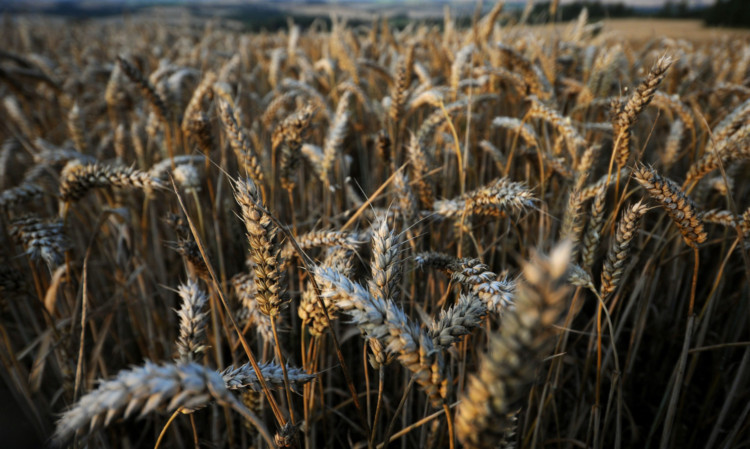According to newly-released Scottish Government estimates, Scottish cereal growers will have harvested 250,000 tonnes more than they did last year.
That will come as little surprise given the much better harvest conditions, but eyebrows may be raised at the finding that cereal yields have increased by 7% comparing the last 10 years with the previous decade.
Many farmers and agronomists have spoken in recent years about what they see as a disappointing plateau in yields.
Scotland’s cereal harvest was generally expected to make a partial recovery in 2013 after poor weather last year caused the largest fall in yields for more than two decades.
In total, Scottish Government analysts expect close to three million tonnes of cereals to have been harvested in recent weeks, an increase of 250,000t on 2012.
“Despite the setback in productivity caused by last year’s weather, the longer-term trend of improving yields continues, with the average cereal yield for the last 10 years 7% higher than in the previous decade,” said the statement.
The 2013 figures show that the year-on-year increase is due to an anticipated 11% improvement in overall cereal yields. This follows a 15% fall in yields last year. The total area of land sown has remained largely unchanged, although oats had replaced wheat and oilseed rape in some areas.
The statement continues: “After a difficult start to the year, growing conditions improved and allowed a relatively straightforward harvest, although the high degree of variability across the country introduces additional uncertainty around current estimates.
Spring barley is estimated to increase by 15% to 1.7m tonnes, and winter barley by 6% to 294,000 tonnes.”
The estimates show that, thanks to increases in yields and area, production of oats has risen by an astonishing 80% to 195,000 tonnes. This is in part due to the replacement of wheat and oilseed rape which experienced a poor start in some places.
The wheat harvest is expected to have fallen by 6% to 630,000 tonnes, and 2% for oilseed rape, to 104,000 tonnes.
Cereals are still being harvested in some areas, and the Scottish Government points out that these figures are “very much provisional estimates”, with final harvest estimates from the Cereal Production Survey to be announced by December.
The claim is that final estimates of overall cereal production are typically within 5% of the early estimates.
Commenting on the figures, NFU Scotland’s combinable crops committee chairman and Mearns farmer Andrew Moir said: “We knew that last year’s dreadful autumn weather and this year’s late spring would have had a significant impact on the 2013 harvest.
“In some areas, winter crops could not be sown, and in some parts where winter wheat and oilseed rape went in, the crops failed in the cold and wet weather of last winter.
“The level of replanting that some farmers had to undertake in the spring was unprecedented and recognised as a major issue by its inclusion in the Scottish Government’s Weather Aid Scheme.
“These are first estimates for the Scottish harvest and are likely to mask significant regional differences on yields that may not emerge until all the harvest results are in,” he said.
“It is true that the 10-year yield average in Scotland is up but within that, wheat is lagging behind, showing only a 4% improvement decade-to-decade. In some traditional wheat-growing areas of Scotland, wheat yields fell below seven tonnes per hectare this season their lowest for 30 years.
“This is worrying as we need to see greater yield gains to meet the demand for wheat and to stay competitive.
“Looking at the graphs on yield since 2004 presented by Scottish Government, all crops other than spring oats are showing a worrying downward trend in recent years following difficult growing years in 2011, 2012 and 2013.
“Scottish farmers have made the most of almost ideal sowing conditions this autumn and areas of wheat and oilseed rape are likely to be much closer to the norm. That gives the potential for a more balanced Scottish harvest next autumn.”
Rural Affairs Secretary Richard Lochhead said:“After 12 months of meteorological misery, this summer was sensational and provided ideal conditions for growing crops.
“Although Scottish cereals are still being harvested and these figures are provisional estimates, today’s expert predictions of a partial recovery after last year’s dreadful drop in production are good news for Scottish agriculture.”
Mr Lochhead was also happy to accept the survey’s conclusions on rising yields.
“I also welcome the increase in average yields in the last 10 years compared to the previous decade, which shows a long- term improvement as our farmers reap the rewards of the new technologies and production methods we now have at our disposal,” he said.
